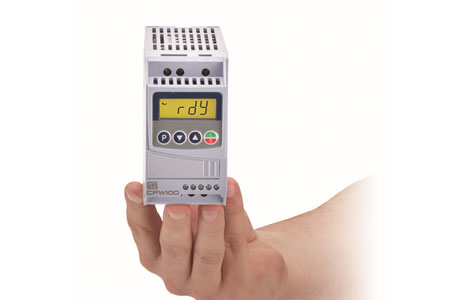Key Takeaway
To determine the right Variable Frequency Drive (VFD) size for your motor, consider two main factors: the VFD rating and the motor load. VFDs are typically rated in horsepower, sometimes also considering output current. Your VFD should be sized equal to or greater than the horsepower rating of your motor. This ensures the VFD can handle the motor’s power requirements effectively without overload. For accurate sizing, match the VFD’s horsepower rating with that of your motor or motors precisely. This approach guarantees optimal performance and longevity of both the VFD and the motor, supporting efficient operations in industrial settings.
Importance of Proper VFD Sizing
The correct sizing of a VFD is crucial for the smooth operation of your industrial systems. A properly sized VFD ensures your motors run efficiently, minimizing wear and tear and reducing potential downtimes. Conversely, an incorrectly sized VFD can cause overheating, inefficient power usage, and frequent breakdowns. Proper VFD sizing enhances reliability and operational efficiency, translating to significant cost savings and improved productivity. By ensuring the VFD matches the motor’s requirements, you can optimize performance, extend equipment lifespan, and achieve better energy efficiency. Ultimately, this foundational step in setup plays a key role in maintaining the overall health of your industrial operations.

Factors Influencing VFD Size
Choosing the right size for a Variable Frequency Drive (VFD) involves several critical factors. First, consider the motor’s power rating and current requirements. The VFD must handle the motor’s full load current without tripping or overheating. Environmental conditions, like temperature and humidity, also play a significant role. VFDs operating in harsh environments might need extra cooling or protection features.
Next, think about the application type. Is it a constant torque or variable torque application? This distinction affects the VFD’s performance needs. For example, constant torque applications, like conveyors, demand more from the VFD than variable torque applications, like fans.
Considering these factors ensures you select a VFD that matches your specific requirements. This approach not only optimizes performance but also enhances the reliability and longevity of both the VFD and the motor. Understanding these elements is crucial for any engineer working with VFDs in industrial settings.
You May Like to Read
Step-by-Step Calculation Guide
Calculating the correct VFD size involves a few critical steps. Start by identifying the motor’s full load amps (FLA) from its nameplate. This value represents the current the motor draws at full capacity. Next, determine the service factor, which accounts for occasional overload conditions. Multiply the FLA by the service factor to get the adjusted current rating.
Then, consider the input voltage and phase. Ensure the VFD matches the motor’s voltage and phase requirements to avoid compatibility issues. Finally, add a safety margin to account for future expansions or unexpected loads. This step ensures that your VFD can handle the motor’s demands without issues.
This step-by-step approach ensures you select a VFD that meets the motor’s requirements, enhancing performance and reliability in industrial applications. By following these steps, you can avoid under-sizing or over-sizing your VFD, ensuring efficient operation and longevity.
Tools and Resources for Sizing
When it comes to accurately sizing Variable Frequency Drives (VFDs), several tools and resources can be incredibly helpful. Many manufacturers offer online calculators specifically designed for VFD sizing. These calculators simplify the process by requiring basic inputs like motor power, voltage, and application type, and then providing the recommended VFD size.
Consulting with VFD manufacturers or suppliers is another excellent resource. These professionals can offer tailored recommendations based on your specific application needs, ensuring you select the right VFD for your project.
Additionally, industry guidelines and standards from organizations such as IEEE or NEMA provide comprehensive information on VFD selection and sizing. These standards ensure you make informed decisions by offering detailed criteria and best practices for VFD implementation.
Using these tools and resources not only streamlines the sizing process but also enhances the reliability and efficiency of your VFD applications. Ensuring you have the right VFD for your motor and application is crucial for optimal performance and longevity.
Common Mistakes to Avoid
Avoiding common mistakes in VFD sizing can save you from significant operational issues. One frequent error is neglecting to account for peak load conditions. Always consider the highest load your motor might encounter to prevent overloading the VFD. Another mistake is overlooking environmental factors. VFDs in dusty or high-temperature environments may require additional protection or cooling.
Also, failing to match the VFD to the motor’s voltage and phase can lead to compatibility issues. Lastly, skipping regular maintenance checks can result in unnoticed wear and inefficiencies, leading to premature VFD failure. Being mindful of these pitfalls ensures smooth and efficient operation, prolonging the lifespan of your equipment and optimizing performance.
Conclusion
Ensuring optimal VFD sizing is essential for the efficient and reliable operation of your industrial applications. By understanding the importance of proper sizing, considering all influencing factors, following a meticulous calculation process, utilizing available tools, and avoiding common mistakes, you set a strong foundation for success. Proper VFD sizing not only enhances the performance and longevity of your motors but also contributes to overall operational efficiency and cost savings. Remember, taking the time to size your VFD correctly pays off in the long run, ensuring your systems run smoothly and effectively.
